Peter Lopez Jr.'s Blog: Xulon Press Blog , page 10
July 19, 2023
Social Media for Unpublished Authors
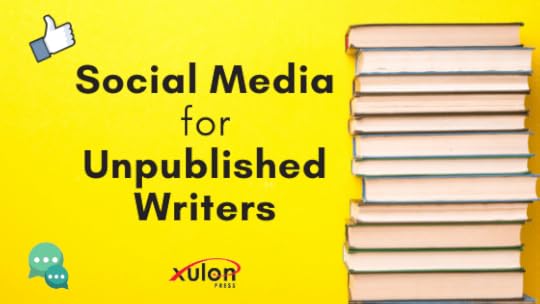
If you’re an unpublished author, you might be delaying building your social media presence. If this is you I’m here to tell you that you should be doing the exact opposite. I would even say you have an advantage because you can build your presence and demand before your book is even out. You have the power to build anticipation and get pre-orders going. The sooner you start, the bigger your audience will be by the time your work is ready.
Having a social media presence is essential for all writers in today’s digital age. Regardless of which genre you write, it can help boost your audience and make more people notice you and your work. Having a social media presence also gives readers somewhere to find out more information about you. You can engage your following with new blogs, upcoming events, live Q&As, just to name a few. Possibilities are endless on social media.
“If I don’t have a book published what would attract a following?”Even as an unpublished author, you can start by writing blogs, providing book reviews, sharing writing tips, creative writing exercises, giveaways, etc. Trust me, the ideas of what to do on social media will keep flowing after you’ve fully submerged yourself in it. For more ideas, you can also follow similar accounts for inspiration. See what others are doing and what’s working for them. And don’t be afraid to connect with them and ask for advice! This can result in some industry friends which can be very beneficial. For example, you can create writing challenges and tag your industry friends to try out the challenge! You could end up creating trends in the writing community and buzz around your account.
Social Media Platforms Every Writer Needs To Be OnNeed help setting up? Check out our Social Media Services to help you get started.
The post Social Media for Unpublished Authors appeared first on Xulon Press.
How to Create a Memoir Outline

Writing a memoir can be a rewarding experience for you as the writer. It allows you to share your unique story, insights, and experiences with family, friends, and the world. Embarking on such a journey, however, may feel a little overwhelming without some planning and organized thoughts. That’s why creating a memoir outline is an important first step before your write your manuscript.
In this blog post, we will discuss why book outlines are helpful, examine different outlining approaches you can try, and we’re sharing an example of a memoir outline using Ernest Hemingway’s life events.
5 Ways Book Outlines are HelpfulA memoir outline serves as a roadmap for your story. It provides structure, organization, and clarity to your writing process. The outline prevents you from getting lost and going off topic, which helps keep your message tight and clear for your future readers. Here are a few reasons book outlines are helpful:
Organization: An outline allows you to arrange your thoughts and ideas in a logical order. You could almost treat your outline like a to-do list. Your outline also ensures that your book flows well from chapter to chapter, so you can maintain coherence.Clarity: By creating an outline, you can spot and clarify your book’s main themes, as well as key events and significant moments to discuss. You’ll be more likely to stay focused on the core message you want to convey in your book if you follow an outline. This also helps you avoid tangents and unnecessary digressions.Spotting Gaps: Creating an outline allows you to identify any major gaps in information in your story that your readers will need. One of the hardest parts of writing a memoir is that the writer knows the full story without any gaps in knowledge, whereas readers are reliant on the writer sharing full details. So, spotting gaps in knowledge for your readers during the outlining process ensures a more robust and fuller story in the end.Time Management: An outline helps you effectively manage your time, which ensures you stay on track with your writing schedule.Reader Engagement: An outline also helps you create a better reading experience for your future reading audience. It helps you pace anticipation, maintain suspense, and have a compelling narrative arc that keeps readers hooked from the beginning until the end of your memoir.Different Outlining Approaches to Try for a Memoir BookWhen it comes to outlining your memoir, there are several approaches you can try to help organize your thoughts and create a coherent structure. Using one or more of these outlining tools can enhance your writing process and ensure that your memoir is well written.
Here are a seven outlining approaches to consider:
Chronological Order: With a chronological outline, you’ll start from the beginning of your life and follow a linear timeline to the present time. This approach allows readers to experience the events in the same order that they happened to you.Theme-Based Outline: If you decide to use a theme-based outline, you’ll center your memoir around specific themes or topics that are important to your story. Each chapter can explore a different theme, such as love, loss, career, or personal growth.Flashback Structure Outline: For this type of structure, you’ll begin with a key event or moment in your life, then you will use flashbacks to provide context and background information. This approach can add suspense and intrigue to your memoir.Geographic or Location-Based Outline: If you’re well-traveled or moved around a lot in your life, you might decide to structure your memoir around different locations you’ve lived or have been significant in your life. Each chapter can focus on a specific place and the memories associated with it.Emotional Journey Outline: If you want to share what you’ve learned with others about an emotional journey you’ve experienced, then you may want to lay out the emotional journey you went through during the events covered in your memoir. Start with the initial emotions, then trace the shifts and transformations that occurred in your life.Problem-Solution Outline: To use a problem-solution type of outline, write down the challenges and/or problems you faced during your life and structure your memoir around how you overcame them.People and Relationships Outline: The last type of outline option we recommend is the people and relationship outline. In this type of outline, you’ll focus on the significant people in your life and the impact they had on your story. Each chapter can explore a different relationship and its influence on your journey.There’s no right or wrong way to outline a memoir, so feel free to mix and match the approaches we listed above or even try a free write of ideas if you haven’t quite decided the flow of your memoir yet. Experiment with different approaches until you find the one that resonates with your story and writing style. The key here is for you to find a structure that helps you effectively convey your experiences and use them to connect with your readers on a deeper level.
Memoir Outline ExampleWhile Ernest Hemingway had a memoir, A Moveable Feast, published posthumously, we drafted a memoir outline using his life events to show an example of how simple one can be:
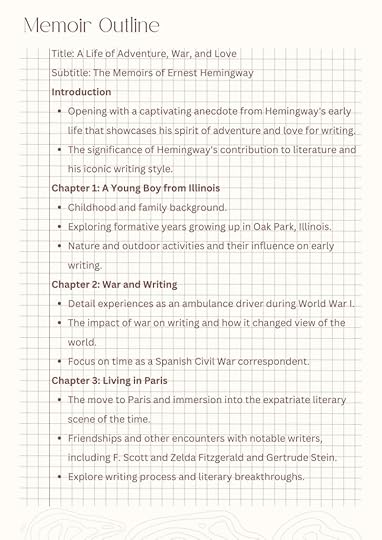
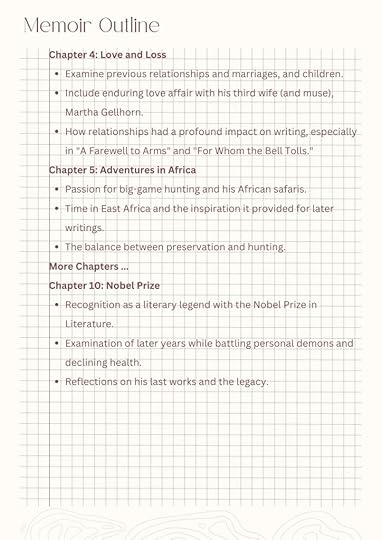
Have questions about drafting your memoir outline? Add them in the comments section and we’ll do a follow-up post with questions and answers!
The post How to Create a Memoir Outline appeared first on Xulon Press.
June 23, 2023
Release Your Fiction Book During the Summer to See Higher Sales

Fiction books with summer release dates see higher sales because it’s the time of year when many readers have more free time, and the season naturally lends to leisure and relaxation. But how do you make sure your fiction book is ready to be released a year from now?
In this article, we will go over what books do well with a summer release, how long it takes to write the first draft of a novel, the recommended timeline to follow if you want to release your novel in the summer, and questions to ask yourself now to have your novel ready by next summer.
What Books Do Well With a Summer Release?Nonfiction books tend to see higher book sales in the fall and winter, but fiction books are better suited for a summer release. Beach reads, general fiction, romance novels, suspense and mystery novels, and young adult fiction are purchased more often during the summer.
The reason these fiction genres do so well when released in the summer is predominantly due to summer travel and leisure activities. Air travel, as well as train and car travel, all increase during the summer months because children are out of school and family vacations take precedence. Parents try to limit screen time and urge their kids to read more. Plus, adults love to escape into a good book and be entertained, too.
How Long Does It Take to Write the First Draft of a Fiction Book?Some writers can finish a first draft in a matter of weeks, while others take years to complete their manuscript. A good rule of thumb, however, is to give yourself six months to a year to write your first draft. This allows you to take your time and produce a well-crafted manuscript.
Questions to Ask Yourself Now to Have Your Fiction Book Ready in One YearHere are some questions to ask yourself to make sure you are on track to start writing your book:
Do I have a clear idea of what kind of book I want to write?Have I set aside enough time to write and edit my manuscript?Do I have an idea of what I like for cover design and marketing materials?Have I started building my author brand and platform?Am I prepared to invest in professional editing and other services to make my book the best it can be?Follow This Timeline to Publish Fiction During the SummerFollow this sample timeline to have your book ready one year from now:
12 months before release: Start writing your first draft.6 months before release: Revise and self-edit your own work. Then find beta readers to critique your writing.3 months before release: Hire a professional editor and start working on your book marketing plans and materials.~ 45 days before release: Work with a cover designer and typesetter to turn your manuscript into a book. Begin building buzz for your book.1 month before release: Promote your upcoming book on social media by sharing your cover design and other details about your book.Release day: Celebrate! Don’t forget to record yourself unboxing your books and share the video on social media.For a more detailed timeline that’s tailored to your individual needs, Call 1-866-381-2665 and speak with one of our acquisitions team members.
The post Release Your Fiction Book During the Summer to See Higher Sales appeared first on Xulon Press Blog, Christian Self-Publishing.
June 6, 2023
What is Substack?
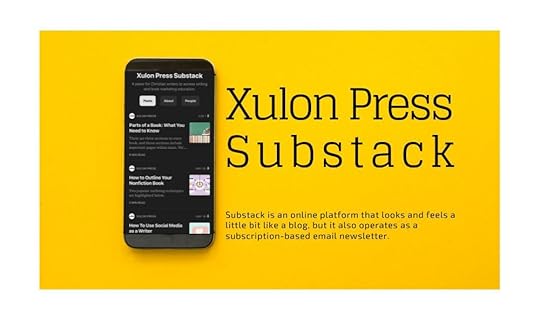 What is Substack and how is Xulon Press using the platform?
What is Substack and how is Xulon Press using the platform?What is Substack? It is an online platform that looks and feels a little bit like a blog, but it also operates as a subscription-based email newsletter. More and more creators, journalists, and news outlets are using the platform to publish their work.
To follow a creator or channel on Substack, you’ll only need to enter your email address. From there, Substack does the work for you and will deliver every new article to your email inbox from the writer or company you subscribed to.
Is Substack Free?Substack is completely free to set up your own account if you decide to create your own newsletter. It’s also free for consumers to subscribe to any creator of their choice.
Do I Have to Pay to Use Substack?Nope! Stubstack is free. However, Substack newsletter owners do have the ability to earn money from their newsletters by adding a subscription rate. Substack allows for a monthly or annual rate and each creator can set their specific rates. Creators can choose whether or not they want to charge for all of their content or just specific articles.
Substack offers its creators the ability to decide for each article they publish whether it will be free to all subscribers or only available to paid subscribers. So, you may see some creators share both free and paid-for content each week.
Announcing the Xulon Press Substack!You don’t have to pay to subscribe to any creators’ email newsletters in order to use the Substack platform. You can simply enter your email address to subscribe to the specific newsletter or newsletters you wish to receive in your email inbox, and you’ll be able to read full articles if the creator designates them for free subscribers.
One of our 2023 goals at Xulon Press was to focus on a writing education initiative, and Substack gives us the perfect space to share writing, social media, and book marketing tips within an easy-to-access space for you.

All you have to do is visit our Xulon Press Substack and subscribe with your email address. Then, you’ll be able to view the full archive of articles already published, and you’ll receive new articles every Tuesday and Thursday in your email inbox.
With our summer launch, we’re making it super easy to access our content. All the content on the Xulon Press Substack is currently free!
We have big, exciting plans for our Xulon Press Substack, though. We’ll be launching a paid subscription option this summer, and you won’t want to miss out! We have some great writing education in the works, including helpful worksheets for memoirs, devotionals, biblical commentary, and self-help books, as well as downloadables to help with outlining, plotting, character development, planning your writing schedule, and more.
On the Xulon Press Substack, we’ll also share in-depth articles focused on the “how-to” of writing, videos you can watch on your own time, and early access to virtual events. It won’t be all writing education focused though; you’ll have access to social media tips and pre-marketing strategies you can use to launch your book.
Questions About the Xulon Press SubstackHere’s the super exciting part: When the paid portion of our Xulon Press Substack launches later this summer, the monthly subscription for premium content will be under $10! Plus, we’ll still be sharing loads of free content for everyone who signs up for our Substack newsletter.
We’re sure you’ll have questions about the Xulon Press Substack in the coming weeks, and we can’t wait to answer them. Add your Substack questions in the comment section and we’ll answer the first 4–6 questions in a follow-up blog post.
Here are a few answers to questions we’re sure you’ll have:
1. Will the Xulon Press Substack be different from the Xulon Press blog?Yes. The content we publish on the Xulon Press Substack will only be available on Substack. This content will heavily focus on writing education, tips, and downloadable worksheets to help you start and finish writing your manuscript, social media help, and book pre-marketing strategies, and we’ll be able to go more in-depth than we can in a blog post.
2. How do I read Xulon Press Substack articles?There are a few ways you can read the Xulon Press Substack. Once you subscribe with your email address, the easiest way to read articles is through your email inbox. Every time we publish an article, it will be sent to you as an email. If it’s a free article, you’ll be able to read the entire article in your email inbox. If it’s a paid subscription article, you’ll be able to read the entire article if you’re a paid subscriber. If you’re a free subscriber, you’ll only be able to read a free sample of the article in your inbox.
You can also download the Substack App to your Apple or Android phone, log in to your account, and read articles through the app.
The third way is to visit XulonPress.Substack.com on your mobile device, tablet, or computer. You’ll sign in to your account and then be able to read our articles.
3. If I subscribe to the Xulon Press Substack, what articles will I get?If you only subscribe to the Xulon Press Substack, then you will only receive articles from our newsletter. From time to time, you may get a general email from the Substack platform as well. However, you will not receive articles from newsletters you do not subscribe to.
4. How much will the monthly subscription rate be for the Xulon Press Substack?The Xulon Press Substack is currently free! In the coming months, we will be incorporating some paid content. The monthly rate will be under $10.
5. Why will there be a fee for the Xulon Press Substack?We want to be able to offer material that has depth and adds value to your writing and publishing endeavors and to do that well the Xulon Press Substack will move to a paid subscription option after the initial launch of the newsletter. We will still publish free Substack articles after the launch, but paid subscribers will have full access to all of our articles, videos, virtual events, and downloadable materials.
Visit the Xulon Press Substack to start enjoying our free articles!
The post What is Substack? appeared first on Xulon Press Blog, Christian Self-Publishing.
May 23, 2023
Developing a Timeline for Your Book
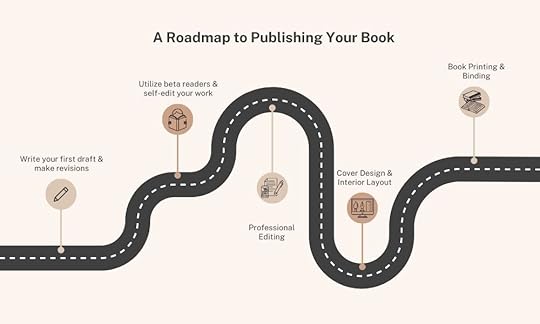 Four steps you can’t miss when publishing a book.
Four steps you can’t miss when publishing a book. Finishing your manuscript is only one piece of the process of publishing your book. When you start developing a timeline for writing and publishing your book, there are a few more steps you’ll need to factor into your timing. It’s important to consider each stage of the production process, including writing, editing, cover design, typesetting, and printing.
Let’s take a look at each stage of the process you’ll walk through when publishing your book. Then, we’ll look at an example timeline for these stages.
Writing and Revising Your ManuscriptDuring the writing stage, it’s important to give yourself enough time to fully develop your ideas and create a cohesive story. This may involve spending time researching and outlining your book before actually writing it. Once you have a solid first draft, it’s important to take the time to revise and edit your work to ensure that it is polished and well-written.
Manuscript EditingThere are two components to editing: self-editing and revising your work, as well as working with a professional editor. Self-editing and revising your work is an important part of drafting your manuscript. The first draft should be focused on getting the bones of your story down, revision rounds are the time for you to fill out your story with description, depth, and fill in any plot holes or confusing areas you find. Then, your self-editing period is when you run through to look at your work with a fine-toothed comb.
After you get your writing as far as you can on your own, your next step is to work with a professional editor who can take your writing to the next level and also ensure your writing follows publishing industry standards.
Cover Design and Interior FormattingWhen it comes to cover design, you’ll want to work with a professional designer to create a cover that accurately represents your book and catches the eye of potential readers. This process requires some research on your part as well. Take time to wander through bookstores and take photos of covers that you like. See what other covers look like in the genre that matches your manuscript. This helps you better communicate what you like to your cover designer.
Once your book is written and edited, it’s time to think about the formatting of your manuscript. This involves a typesetter designing your manuscript into book format in a way that meets industry standards and looks great in print and on eBook devices.
Printing Your BookOnce books are fully designed inside and out, you’ll approve your digital files, and those files are then sent to a book printer. The book printer is responsible for creating physical copies of your book, including paperback and hardcopy versions. Book printers print your book, trim it to the exact trim size you selected, bind the pages together, and attach the inner pages to your cover. The end result of this process is your book!
Example Timeline for Each Stage of Self-Publishing Your Book
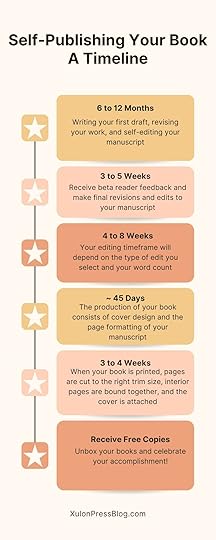
By taking the time to develop a detailed timeline for your book’s production, you can ensure that you have enough time to produce a high-quality book that will resonate with readers and stand the test of time.
The post Developing a Timeline for Your Book appeared first on Xulon Press Blog, Christian Self-Publishing.
May 19, 2023
Nonfiction Books See Higher Sales During the Fall and Winter
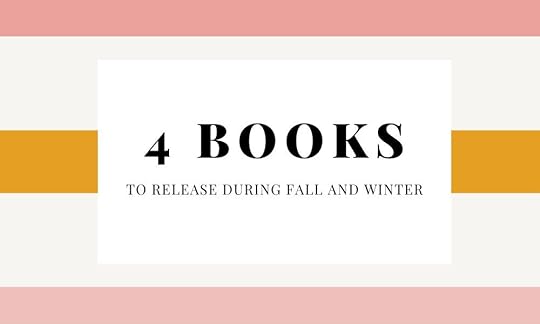
As an author, one goal for your book is for it to have the most impact possible. Publishing your book at the right time of year is one way to achieve this goal. There are many factors to consider when deciding when to release your book. In this article, we’re focusing on why fall and winter are the best seasons to publish certain types of nonfiction books. Specifically, we’ll be discussing memoirs, devotionals, biblical commentary books, and self-help books.
With the next year’s resolutions already on the horizon, people tend to start gathering new books and materials that lend to their personal growth and their walk with God. If someone wants to increase their knowledge of the Bible in the new year, these readers are typically purchasing biblical commentaries in November and December, so they can get a jump start on diving deeper into the Word of God.
The same is true for devotionals; since these are often tied to the calendar—many are 365-day devotionals or 30-day devotionals—so these are often pre-purchased during November and December so they are readily available for a fresh start on January 1.
Stats on Sales for Nonfiction BooksFirst, let’s take a look at some statistics that demonstrate why fall and winter are great seasons for publishing books. Approximately 25% of all book sales for the year take place between November and December, according to data published in January 2023. And 12% of those same sales numbers took place a few days before Christmas. These numbers clearly show that books make great gifts! Readers also tend to spend more time inside during the colder months, and cozying up with a good book is a great cold-weather hobby.
Nonfiction Book Release TimelineIf you want to have your book released in the winter and available for the holidays, now is the best time to start planning. Here’s a rough timeline to help you get started. (Please note, this is a rough outline, and a Xulon Press acquisitions team member can help you with more specific deadlines.)
May: Submit your manuscript for Manuscript ReviewJune: Submit your manuscript for a basic edit, line edit, or developmental editSeptember: Make final revisions to your manuscriptOctober: Submit a book for production and start pre-marketing your book (cover design and interior layout design)November: Release your bookThis timeline will vary some as our book printer gets busier, so we always advise you to beat the rush. The key to launching your book before the holidays is to start planning early so that you have enough time to get everything done.
ConclusionFall and winter are great seasons to publish books, particularly memoirs, devotionals, biblical commentary books, and self-help books. By following a production timeline and submitting your manuscript now, you can ensure that your book is released at the perfect time to have maximum impact.
Call 1-866-381-2665 to start your publishing journey now.
The post Nonfiction Books See Higher Sales During the Fall and Winter appeared first on Xulon Press Blog, Christian Self-Publishing.
Book Types to Release in Fall and Winter
 Why You Should Publish Memoirs, Devotionals, Biblical Commentary Books, and Self-Help Books in the Fall and Winter
Why You Should Publish Memoirs, Devotionals, Biblical Commentary Books, and Self-Help Books in the Fall and WinterSimply put: These book types garner more sales traction in the fall and winter months.
As an author, one goal for your book is for it to have the most impact possible. Publishing your book at the right time of year is one way to achieve this goal. There are many factors to consider when deciding when to release your book. In this article, we’re focusing on why fall and winter are the best seasons to publish certain types of books. Specifically, we’ll be discussing memoirs, devotionals, biblical commentary books, and self-help books.
With the next year’s resolutions already on the horizon, people tend to start gathering new books and materials that lend to their personal growth and their walk with God. If someone wants to increase their knowledge of the Bible in the new year, these readers are typically purchasing biblical commentaries in November and December, so they can get a jump start on diving deeper into the Word of God.
The same is true for devotionals; since these are often tied to the calendar—many are 365-day devotionals or 30-day devotionals—so these are often pre-purchased during November and December so they are readily available for a fresh start on January 1.
Stats on Book Sales for Fall and WinterFirst, let’s take a look at some statistics that demonstrate why fall and winter are great seasons for publishing books. Approximately 25% of all book sales for the year take place between November and December, according to data published in January 2023. And 12% of those same sales numbers took place a few days before Christmas. These numbers clearly show that books make great gifts! Readers also tend to spend more time inside during the colder months, and cozying up with a good book is a great cold-weather hobby.
Dates To Keep in Mind to Have Your Book Ready for the HolidaysIf you want to have your book released in the winter and available for the holidays, now is the best time to start planning. Here’s a rough timeline to help you get started. (Please note, this is a rough outline, and a Xulon Press acquisitions team member can help you with more specific deadlines.)
May: Submit your manuscript for Manuscript ReviewJune: Submit your manuscript for a basic edit, line edit, or developmental editSeptember: Make final revisions to your manuscriptOctober: Submit a book for production and start pre-marketing your book (cover design and interior layout design)November: Release your bookThis timeline will vary some as our book printer gets busier, so beating the rush is always advised. The key to launching your book before the holidays is to start planning early so that you have enough time to get everything done.
ConclusionFall and winter are great seasons to publish books, particularly memoirs, devotionals, biblical commentary books, and self-help books. By following a production timeline and submitting your manuscript now, you can ensure that your book is released at the perfect time to have maximum impact.
Call 1-866-381-2665 to start your publishing journey now.
The post Book Types to Release in Fall and Winter appeared first on Xulon Press Blog, Christian Self-Publishing.
May 18, 2023
Best Time of Year to Release Your Book

Depending on the genre of your book, you’ll find there are some seasonality trends to guide you when it comes to publishing your book.
Timing can play an important role in the success of your book’s release. And while the book publishing industry doesn’t follow an official publishing calendar for specific genres like the movie industry does (For instance, did you know blockbusters get released during the summer for a reason?), there are some seasonality trends that forecast when certain genre types experience higher sales.
The holiday season—Thanksgiving through New Year’s—is an extra busy time of year in book publishing because books make great gifts. Hitting the book season just right as an author though, requires a bit of preplanning.
In this post, we’ll explore the best times to release different types of books and how you can plan ahead to get your book in readers’ hands exactly when they are looking for books in your genre.
Best Time of Year to Release Your Nonfiction Book (Business Books, Devotionals, Memoirs, and Self-Help Books)For nonfiction books, such as business, devotionals, self-help, and memoir books, the fall is typically the best time to release your book. When temperatures start to dip, readers are more likely to be indoors and some are looking for new skills to learn or hobbies to take up.
Without fail, business, personal growth, and other self-help books rise in popularity in late fall and sales in these genres remain higher well into the new year when people think about and plan their New Year’s resolutions.
Devotionals and biblical commentary books also tend to see an increase in sales around the new year because of the fresh start that comes with the beginning of the year. Many people like to have their new yearly devotional purchased ahead of the new year, so they can crack the spine on January 1. Setting new goals for studying the Bible is also a great resolution for people to make, so ensuring your book is ready and available ahead of time is extremely valuable.
Memoirs do well when published in the fall months since people seem to slow down and have more time on their hands to read. Plus, your life story in book form makes a lovely holiday gift for your closest family and friends.
Releasing your nonfiction book in the fall can be a strategic move for authors because it is often the time when most people are self-reflective, receptive to new ideas, and looking to add new skills and make improvements to their health and well-being. By timing your book’s release with these seasonal trends, you can maximize your chances of reaching your intended audience and generating sales.
Best Time of Year to Release Your Children’s BookSpring to early summer is a great time to release your children’s book.
Teachers and librarians often review their collections this time of year and look for new books to add to their shelves. By releasing a new children’s book in the spring or early summer, you increase the visibility of your book to those who are in charge of purchasing books for schools and libraries.
Parents are also looking for new books to read to their children during the spring and summer months. With more free time and the desire to keep their children engaged during breaks from school, parents often seek out new books to add to their children’s collections.
Best Time of Year to Release Your NovelAre you penning the next great American novel? Summer is a great time to release your latest work. That’s because people are often on vacation, enjoying the longer days, and looking for ways to relax. So novel sales naturally see an increase during the summer months.
With more free time during the summer months due to travel or summer work hours, readers often gravitate toward novels that have them dreaming of faraway places, sandy beaches, adventure, and even some suspense. These types of books are entertaining and hard to put down.
Summer is so popular for new novels that a whole sub-genre called “beach reads” came into existence a few years back. These are typically easy-to-read, light content that readers can enjoy on the beach, by the lake, or next to the pool.
Releasing Your Book Around Specific Holidays and EventsIf you’re writing a children’s book geared toward a specific holiday—Thanksgiving, Christmas, Valentine’s Day, Easter, and so forth—we recommend releasing your book in the months leading up to the holiday of your themed book. This way, you have time to publicize and market your book, schedule book signing events, and even host some book giveaways on Goodreads or your social media accounts.
Writing a political fiction or nonfiction book? It’s best to release those genre types when the issue is a particularly hot button or around election times. This way, your book gains more traction when people are in search of books and other content on a specific political event.
Publish Your Book This Year!Our team would love to help you release your book before Christmas this year, so you have plenty of time to market and sell copies of your book well in advance of the holiday season. May is the best time of year to submit your manuscript if you will also be using one of our editorial services, including Manuscript Review, Basic Editing, and Line Editing.
We know May sounds early, but it’s actually just enough time to have your manuscript edited, designed, and available for purchase around November of this year.
Has your manuscript already been edited? Beat the rush later this year by submitting early.
Receive your free publishing guide today!
The post Best Time of Year to Release Your Book appeared first on Xulon Press Blog, Christian Self-Publishing.
May 9, 2023
How to Write a Book While Working Full-Time
 How to Write a Book When Working Full-TimeWorking 40 or more hours a week doesn’t have to keep you from fulfilling your dream of writing (and publishing) a book.
How to Write a Book When Working Full-TimeWorking 40 or more hours a week doesn’t have to keep you from fulfilling your dream of writing (and publishing) a book.We all have daily commitments like full-time jobs, families, friends, volunteering, and more. With careful planning and time management, it’s possible to incorporate writing time into your busy schedule and even meet your personal writing goals.
It’s important to remember that writing is a process and your progress won’t always be linear. Some days you may feel like your thoughts are overflowing with creativity while other days you may struggle to get words onto paper. Be gentle with yourself and don’t give up when the going gets tough. Keep showing up at your designated writing time and trust that the process will lead you where you need to go.
Here are three tips to help you write a book when you work a full-time job.
1. Prioritize Writing
One of the most important things you can do to start writing a book is to make your writing a priority. This is often easier said than done. It can be difficult to find the time and motivation to write, especially when life is full of other commitments.
To make writing a priority, it’s important to set aside dedicated time for it. Schedule it in. Even if you devote as little as 15 minutes a day, you’ll be surprised by how much writing you can get done. The key is to make your writing time consistent and non-negotiable. Treat this time as sacred and make it clear to your friends and family that you are not available during your writing sessions.
2. Increase Your Productivity
To maximize your scheduled writing time, there are several ways to increase productivity, including scheduled breaks, exercise, and more.
First off, try to avoid perfection with your first draft—it’ll slow you down. Book writing is a multi-step process. In later revisions and drafts, you’ll have time to go through your work and look at it through the eyes of an editor. For your first draft, however, don’t self-edit what you put on paper—just keep writing.
If you set aside time at night to write, take regular breaks throughout your work day to recharge your energy levels and maintain focus. A 2019 American Psychological Association article states that taking breaks can improve focus and increase productivity, so step away from your work a few times a day for several minutes to stretch, take a walk, or watch some cute animal videos.
Another helpful tip is to incorporate exercise into your daily routine. Exercise improves physical health, but it can also boost mental clarity and creativity, according to a recent study. This can lead to more productive writing sessions.
Additionally, consider using technology to your advantage. There are apps and programs available that can help you stay organized and focused, such as time-tracking apps like Toggl or distraction-blocking software like StayFocused. Experiment with different tools and find the ones that work best for you.
3. Break It Down
One of the most helpful ways to see results in your writing progress is to break big goals down into smaller ones. Instead of trying to write a chapter in one sitting, set a goal to write a specific number of words per writing session. Start with as little as 500 words to see how you do and then you can gradually increase your word count goal for each block of writing time.
This approach has several benefits. First, it allows you to make steady progress on your book even if you only have a limited amount of writing time each day. Second, it can help you to avoid feeling overwhelmed by the task of writing a book, which is a common cause of writer’s block.
By breaking tasks down into smaller, more manageable goals, you can stay motivated and focused on the task at hand. Finally, it can help you to develop good writing habits, which will serve you well in the long run.
ConclusionFinding time to write a book when you work a full-time job may feel challenging at times, but it’s possible. By prioritizing writing, using time management techniques, and breaking your goals down into smaller tasks, you can make steady progress on your book. Remember, the key is to be consistent and make writing a priority in your life.
The post How to Write a Book While Working Full-Time appeared first on Xulon Press Blog, Christian Self-Publishing.
May 3, 2023
Tips to Start Writing Your Book Now
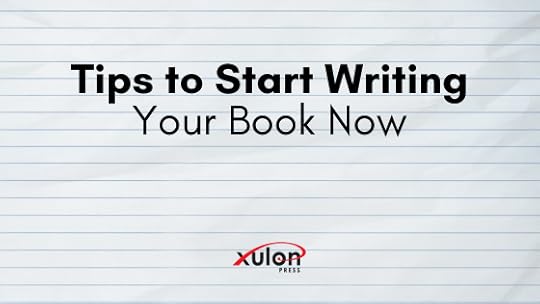
Millions of people want to write a book, but only a few will. Let’s get your book across the finish line! With the right mindset and some helpful tips, writing a book can also be a rewarding experience. In this article, we offer tips to help you start writing, the steps involved in writing your book, and a deeper dive into finding beta readers to read your work when it’s time.
3 Tips to Start Writing Your BookThe first step to writing your book is to simply get started. Here are some tips to help you overcome the initial hurdles:
1. Create an OutlineAn outline helps you organize your thoughts and keep your writing on track. Settle the points you want to cover in your book and draft a rough outline. This also helps you notice any gaps in your story.
2. Set a GoalOnly 20% of the population sets goals, according to Reliable Planet. Yet setting goals is the first step to achieving what you want to accomplish. When it comes to writing a book, decide how many words you want to write at the weekly and daily levels and stick to it. Even incremental advancements to your word count will add up over time.
3. Do a Brain Dump Every DayWe all have cobwebs we need to clear out of our brains before the good stuff can flow. Try a brain dump either first thing in the morning—aim for two to three pages of stream-of-consciousness writing—or write before you sit down to work on your book. This way, you get the distractions, random thoughts, and ideas down in a separate space and can focus solely on writing your story when you turn to your manuscript.
Steps Involved in Writing Your BookNow let’s dive into the steps involved in writing your book:
1. ResearchWhether you’re writing a novel or a non-fiction book, you need to have a good understanding of the topic you’re writing about. Thorough research shows your readers that your book is accurate and informative.
2. Creating the First DraftOnce you have a good understanding of your topic, it’s time to start writing. Use your outline as a guide and get your words down. Don’t worry about getting everything perfect the first time around. Just focus on getting your ideas down on paper. You’ll have plenty of time to make revisions, get feedback, and have your manuscript edited.
3. Self-EditingAfter you’ve completed your first draft, it’s time to start editing your work. This is where you refine your writing and make it the best it can be. Focus on filling in gaps in your story, adding more information and you may even need to rearrange chapters or paragraphs. You can repeat this revision process as many times as you feel necessary. Then, you’ll want to do a full read-through just focusing on sentence structure, grammar usage, and punctuation. Click here for more tips on self-editing your book.
4. Beta ReadersBefore you submit your book, it’s standard practice for writers to find beta readers who are willing to read, make notes on, and provide feedback for your manuscript. You’ll want your beta readers to be honest and thorough with their feedback, so you may find it more helpful to ask acquaintances or strangers to beta read for you instead of friends or family. They can help you identify areas that need improvement or provide general feedback on your writing.
How Do I Find Beta Readers for My Book?Finding beta readers is an important step in the writing process and it doesn’t have to be challenging. Here are four tips to help you find beta readers:
1. Join Writing GroupsA writing group can not only help hold you accountable during the writing and revision process, but it’s also a great way to connect with other writers and get feedback on your work. You can also find beta reader buddies through a writing group. Look for local writing groups in your area or through online writing communities.
2. Ask Friends and FamilyYour friends and family may be great beta readers, too. Just be sure you ask them to be honest and thorough in their review of your work and remind them that their feedback won’t hurt your feelings. Reach out to three to five people and ask if they would be willing to read your work.
3. Tap into Your Social Media FollowingIf you have a larger following on social media, you could ask followers if they would want to read your work and provide feedback. Set clear deadlines and expectations, so you get back helpful commentary.
4. Use Beta Reader ServicesYour last option is to use a beta reading service. These programs connect you with beta readers who can provide feedback on your work.
You’ll want to aim for three to five beta readers for your manuscript. A minimum of three people is important because it’ll give you more context if several readers trip up over similar places in your manuscript. And any more than five readers may create too much commentary to read through.
You may also find a mix of the beta reader types above helpful. Maybe you find a beta reader through your writing group, a friend or family member, and one from social media. A good mix of people who review your work will give you a fuller picture of how future readers may respond to your work.
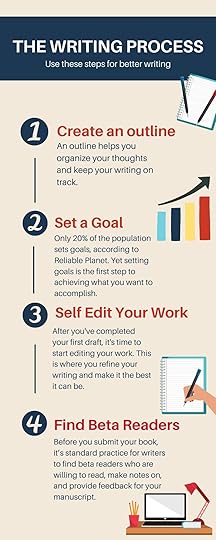
By creating an outline, setting goals, and focusing on drafting your manuscript, you’ll have a great start writing your book. Conduct your research, write your first draft, and carefully edit your work. The last step of your writing process will be to find beta readers to review your work and provide feedback.
The post Tips to Start Writing Your Book Now appeared first on Xulon Press Blog, Christian Self-Publishing.
Xulon Press Blog
- Peter Lopez Jr.'s profile
- 8 followers



